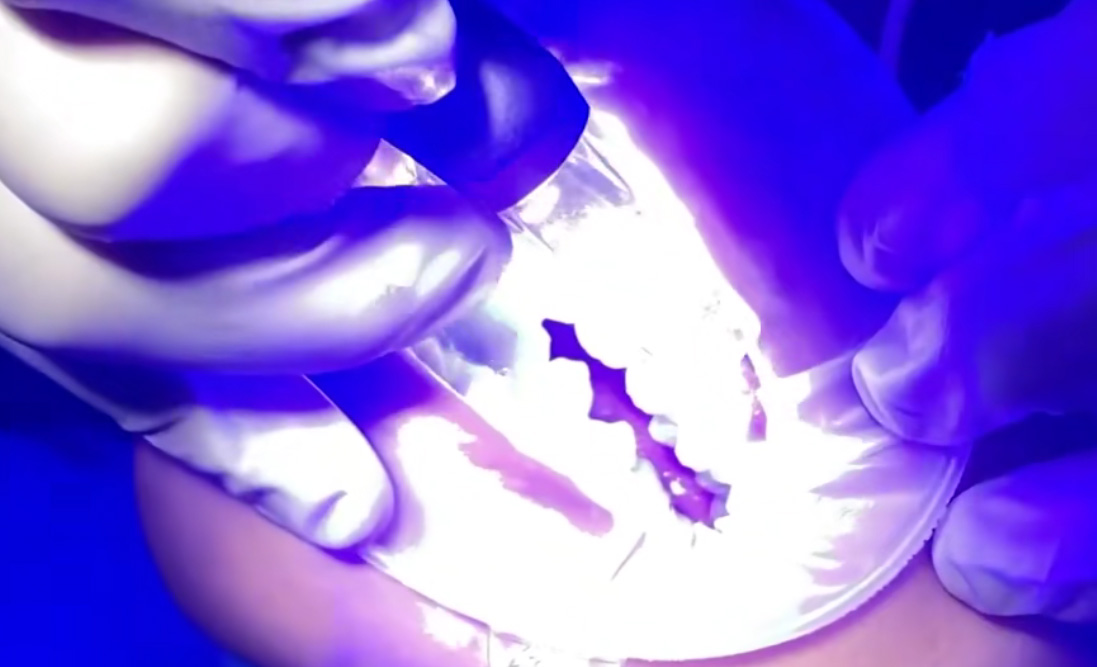REX Veterinary Laser
Clinical Benefits of 450nm Blue Laser in Oral Surgery

— A Precise, Safe, and Minimally Invasive Surgical Solution
1. Introduction
In modern oral surgery, the introduction of laser technology has significantly enhanced the safety and comfort of soft tissue procedures. Blue laser (450 nm), as an emerging high-energy laser, is becoming an ideal choice for oral soft tissue surgeries due to its unique tissue absorption characteristics and operational advantages. It is particularly suitable for minimally invasive procedures such as gingivectomy, crown lengthening, oral ulcer treatment, frenectomy, and fibroma removal.
2. Physical Properties and Tissue Interaction of Blue Laser
Efficient Absorption
The 450 nm blue wavelength is highly absorbed by hemoglobin and melanin—far more efficiently than traditional wavelengths like 980 nm or 1064 nm. This allows for an optimal balance between cutting speed and hemostasis: rapid incision with minimal bleeding.
Shallow Penetration and Minimal Thermal Diffusion
Blue laser energy is concentrated primarily in the superficial layers due to its limited tissue penetration depth. This helps prevent deep tissue carbonization or thermal damage, preserving periodontal structures and underlying bone.
3. Core Advantages of Blue Laser in Oral Soft Tissue Cutting
✅ 1. Higher Cutting Precision
The blue laser creates a narrow, clearly visible incision path. It requires minimal tissue traction during operation, making it ideal for delicate areas such as the lingual frenulum, gingival papilla, and labial frenulum.
✅ 2. Superior Hemostasis
Thanks to its strong absorption by hemoglobin, the blue laser typically requires no auxiliary bleeding control. This results in a clear surgical field and shorter operation time.
✅ 3. Reduced Thermal Damage and Postoperative Discomfort
Compared to traditional hot lasers, the blue laser generates more focused heat, resulting in less carbonization, tissue shrinkage, and edema in the surrounding area—leading to faster recovery and less postoperative pain.
✅ 4. Lower Infection Risk and Accelerated Healing
The laser has mild sterilizing effects. Its clean and precise incision minimizes the risk of infection while promoting granulation tissue formation and epithelial repair for quicker wound closure.
✅ 5. Improved Patient Experience
With little to no need for sutures or bleeding control, patients experience less postoperative pain and a lower recurrence rate. This makes it especially suitable for pain-sensitive, anxious, or uncooperative patients such as children or the elderly.
4. Common Clinical Indications
Due to its efficient cutting and hemostatic capabilities, the blue laser is widely applicable to various oral soft tissue procedures. In gingivectomy, it delivers clean and precise incisions with minimal bleeding, maintaining a clear surgical field and reducing procedure time. For oral ulcers and mucosal inflammation, its non-contact operation and antibacterial properties help relieve pain quickly and stimulate tissue regeneration for faster healing.
In patients with short lingual or labial frenulum, particularly children, the blue laser offers a suture-free, virtually bloodless solution that significantly reduces intra- and postoperative discomfort. In aesthetic gingival contouring, it enables more accurate gingival sculpting for harmonious smile lines while minimizing collateral tissue damage.
Additionally, for peri-implantitis soft tissue management, the blue laser’s precision, low thermal profile, and excellent tissue control make it a safe and effective tool for decontaminating affected areas and improving the peri-implant environment.
5. Conclusion
The 450 nm blue laser, combining cutting efficiency, hemostatic capability, and surgical safety, demonstrates high clinical value in oral soft tissue procedures. It offers irreplaceable advantages in enhancing surgical precision, reducing patient discomfort, and optimizing postoperative recovery.
With continued technological advancement and increased professional training, blue laser applications will become increasingly prevalent in everyday dental practice, emerging as a key force in modern minimally invasive dentistry.
Latest articles:
- Ailucs Multi-Wavelength Class IV Laser Therapy: A Painless and Highly Effective Solution for Pet Skin Diseases
- Lyra veterinary Laser Therapy Device: A Magical Aid for a Kitten’s Fracture Recovery
- Laser Therapy Device: A “Light-Speed” Solution for Tendon Repair
- Laser Therapy: A Powerful Way to Boost Veterinary Clinic Revenue
- Veterinary Laser Therapy: Precise Application to Support Pet Rehabilitation
- Degenerative Joint Disease — The Silent Pain Your Dog Endures
- The Necessity for Veterinary Clinics to Equip Laser Therapy Devices
- Animal Studies on How Class IV Laser Therapy Accelerates Deep Tissue Healing and Repair
- The Importance of Eye Protection in Veterinary Laser Therapy
- Pet Laser Therapy Equipment Buying Guide: Enhancing Scientific Healing Efficiency
